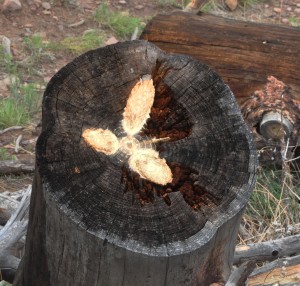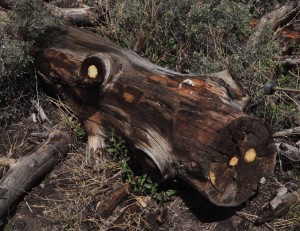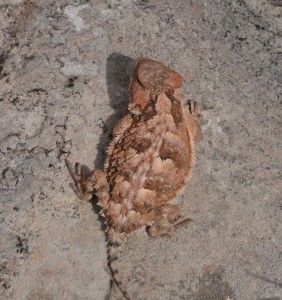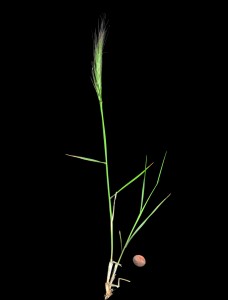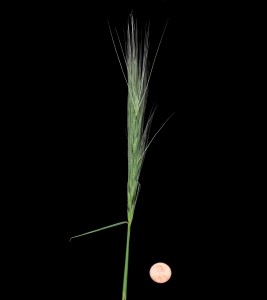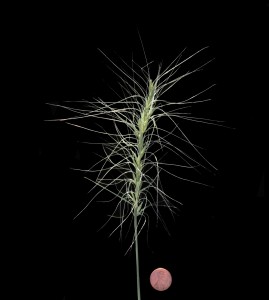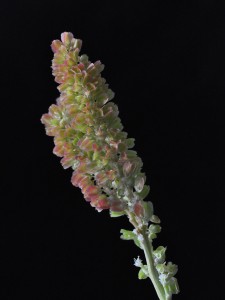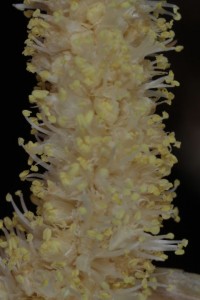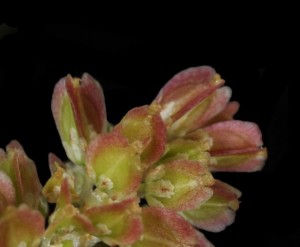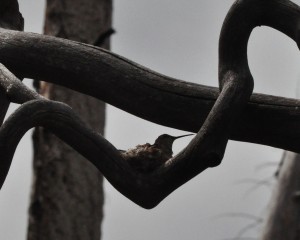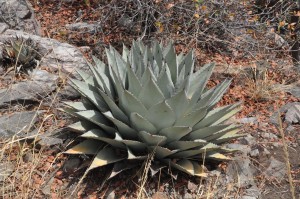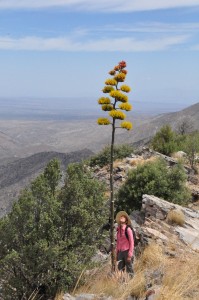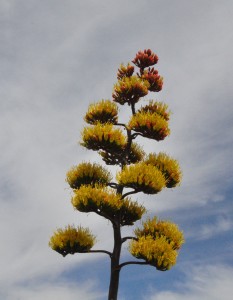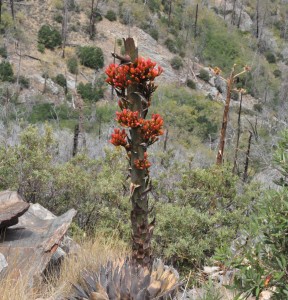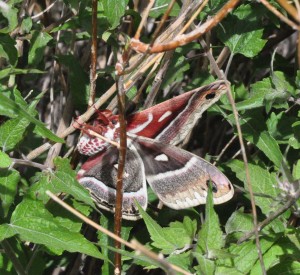The rains have come, and the mountains are springing back to life. For some plants the rains came too late, as you can see in this Bracken fern (Pteridium aquilinum). We saw a patch of them that had already turned brown as if calling it quits for the year. Fortunately most of the ferns have survived.

The fern with its fall colors
And there are wild flowers everywhere!
On a recent hike we found ourselves studying the fallen trees and noticing that the logs had yellow highlights. It seems as if there is a fungus, also responding to the rain, that attacks only certain parts of the fallen trees. The yellow spots are knot holes, remnants of branches when the tree was very much younger.
The horned lizards (often called horned toads, but they are really lizards) are much in evidence, posing for quite a long time.
On my recent trip Ellen told me about a grass in bloom, Squirreltail grass (Elymus elymoides). I took some photographs, then noticed in my grass books that the awns on the head of the grass splay out. I took a piece home with me. Within a few hours it had opened up into this wonderful form.
Squirreltail grass
The penny is there to give scale
The had of the grass closed . . . . . . . . . . . . . . . . . . and open
Today I went looking for more grasses but got distracted by coming across Desert spoon plants (Dasylirion wheeleri or Sotol), with the flowers within reach. We have one in our front yard. The flower stalk is over 10 feet tall, and half of that is covered with male flowers. This is one of those plants that has separate male and female plants (dioecious). I have been wanting to use my close up lens to see what the actual flowers looked like, and today was my day. I found many plants in Molino Basin. some of each sex with flowers near enough to the ground to be reached. After blooming the stalks stay on the plant for over a year.
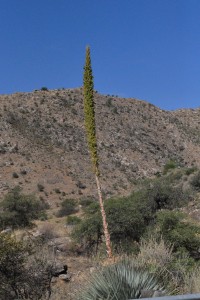
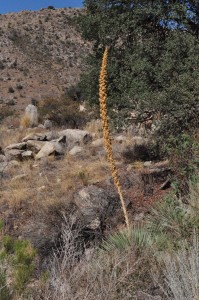
The left picture is the female and the right is the male plant
On the left, the female flowers, and the males on the right
A close up of the female flowers
From now on every trip up the mountain will bring new pleasures.

